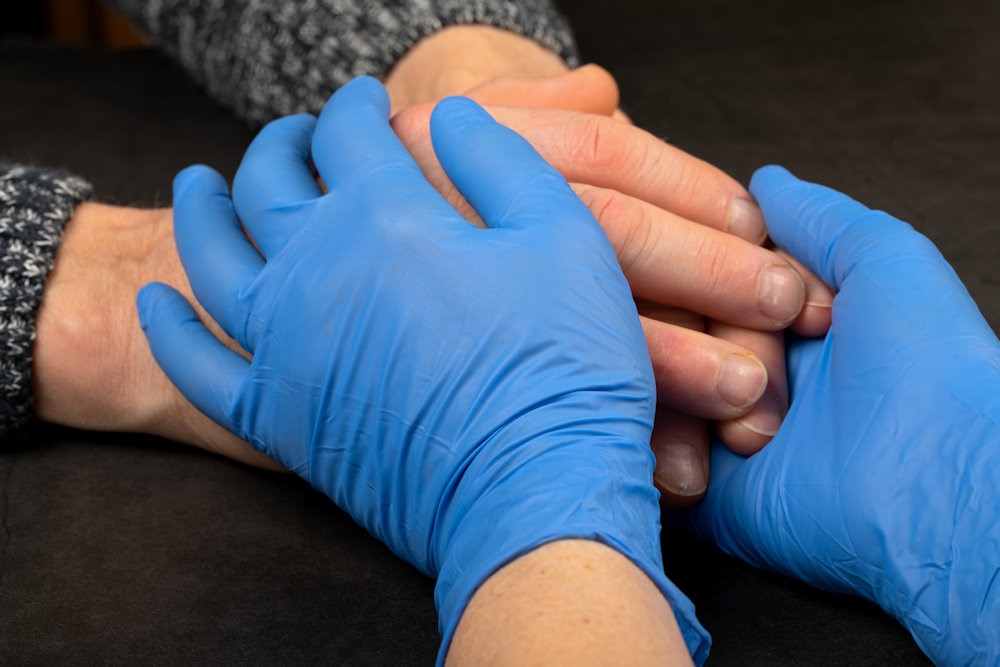Challenges of infection prevention and control in Scottish care homes
By Le Nguyen - Posted on 4 June 2020
With care homes in the news due to the impact COVID-19 is having on them, researcher Le Nguyen posts about the challenges care homes can face with infection prevention and control.
Care homes that provide health and care services for approximately 40,000 residents in Scotland, of which the majority are elders with complex medical and care needs, are significantly vulnerable to healthcare-associated infections in general and the widespread transmission of COVID-19 in particular - and resulting poor outcomes.
Data from the National Records of Scotland showed that more than half of Scotland’s COVID-19 related deaths happen in care homes. The unique operational and cultural characteristics of care homes and the currently evolving models of healthcare delivery in Scotland create great challenges for infection prevention and control in this setting. This has become more evident amid the COVID-19 pandemic.
The mismatch between demand and funding for health and social care
The mismatch between demand and funding for health and social care provided in Scottish care homes, which also occurs in other parts of the United Kingdom, is likely to negatively influence the priority of infection control, which is a key element for safe care. Councils and National Health Service (NHS) boards in Scotland who fund nursing and personal care services provided in care homes for entitled residents are encountering increasing financial pressure caused by an ageing population with increasingly complex health and social care needs. Currently, the shortfall in public funding (UK-wide) for care homes is ~5%–10%, equivalent to ~USD1.2–2.4 million (£200–300 million).
Additionally, the shift to more sustainable models of health and social care, which reduce costs, employ sufficient staff with the right skills, and meet the growing demand, is not occurring rapidly enough to address this issue. The financial restriction to access timely and appropriate care in care has led to an increase in avoidable infections and increased use of NHS services among people aged 65 and over. Due to restricted financial resources, the Scottish Government is more likely to prioritise other health and social care needs for the growing elderly population than investing to implement improved models of infection control practice. Service providers in care homes, most of whom are in the private sector, may also not be eager to prioritise infection control over other nursing and care services that improve resident satisfaction more directly.
The staffing shortage and high turnover of staff
The significant staffing shortage and high turnover of staff can reduce compliance to infection practices and make it more difficult and costly to provide infection control training, thereby promoting the spread of healthcare-associated infections. The shortage of staff, which causes heavier workloads, increased time pressure, and stress, is associated with lower compliance to infection control interventions and standards and the resulting increased spread of infections. The nurse shortage is also a major factor that constrains healthcare facilities’ capability to handle possible future threats such as outbreaks and epidemics. In addition, the insufficient staff in care homes hinders the implementation of many infection control procedures such as screening and surveillance. The perception of unsafe working conditions in care homes caused by staffing shortfalls also impedes the retention of qualified staff in this setting, worsening the current situation.
In addition to the staffing shortage, high turnover rates of staff in care homes and the reliance on temporary employees can undermine efforts to implement infection control policies and provide infection control education and training to staff in this setting. These high staffing turnover rates imply that care homes bear additional costs to provide more frequent in-service training sessions on infection control practices and to ensure that new staff are familiar with the facility’s infection control practice protocols and annual infection control programs.
Staffing care homes to meet the personal outcomes of residents has been challenging during the period of COVID-19 epidemics. Staff has been absent for a range of reasons, including shielding due to underlying conditions, self-isolation due staff being symptomatic, non-COVID-19 related illness, others in their household being symptomatic, caring responsibilities for others with non-COVID-19 related ailments, personal fear of contacting or coming into contact with COVID-19, assuming childcare responsibilities for varying reasons including no access to educational facilities and usual childminding arrangements being disrupted. Agencies are reluctant to send casual bank staff to care homes with known positive cases and some taxi companies would not accept hires for staff to care homes. Testing for staff working in this setting is not in place and this meant that those who are self-isolating could not be tested to inform if they could return to work if testing negative.
Lack of evidence to support infection control practice in care homes
Most evidence that guides infection control practice and decisions implemented in care homes has been adapted from infection control validated in hospitals, despite evidence in one setting not directly translating to the other. The effectiveness of infection control interventions, programmes, and programme components have not been rigorously evaluated in care homes due to challenges of conducting research in this setting. Infection control strategies and policies used in hospitals may not be appropriate or effective to address the distinct problems of infections in a care home environment that serves as both a healthcare setting and as a residential home because of the differences in infrastructure, management, and culture between care homes and acute-care settings. For example, isolation and contact precautions are considered effective and commonly used infection control interventions in hospitals; however, they may not be preferable measures in care homes where social interaction is important for resident welfare. Social distancing amidst COVID-19 is difficult to practice in care homes as many residents have mental illness such as dementia and many are immobile which requires staff to provide direct cares that involve close contact.
Prevention and control of infections in general, and COVID-19 in particular in care homes, is complicated and challenging. Apart from the barriers caused by unique operational and cultural characteristics of care homes, other issues that challenge infection control in this setting originate from gaps in knowledge and resources common to the entire Scottish health and social care system that cannot be addressed by individual facilities.
This blog post is based on the original paper by Le Nguyen, Itamar Megiddo and Susan Howick which was published in the journal "Infection Control & Hospital Epidemiology".










